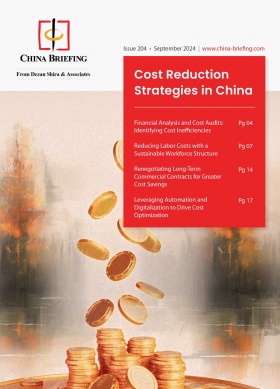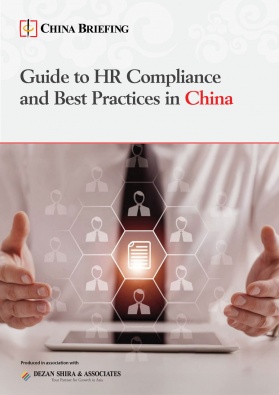Reducing Labor Costs in China with a Sustainable Workforce Structure
Optimizing labor costs sustainably in China involves adopting flexible employment practices, adapting to economic challenges, and implementing effective compensation structures. This multifaceted approach ensures cost savings while keeping the workforce motivated and engaged.
As labor costs rise and become a pressing issue, optimizing labor costs while maintaining a sustainable workforce structure has been increasingly important for effective company management.
Utilizing temporary staff, outsourcing, and other flexible employment methods can help reduce long-term fixed costs and align labor expenses with operational demands. Additionally, designing effective compensation structures and incentive programs is crucial for keeping staff motivated. In extreme cases, businesses could also consider downsizing or adjusting employees’ salaries for direct cost savings.
This article explores various strategies for optimizing labor costs.
Adopting flexible employment models
The concept of “flexible employment” has gained significant attention in recent years, driven by the macroeconomic environment. Economic downturns and intensifying competition have made flexible employment a necessity in the VUCA (Volatility, Uncertainty, Complexity, Ambiguity) era. This approach not only helps enterprises control costs but also enhances efficiency, flexibility, and competitiveness.
Broadly speaking, flexible employment encompasses various labor solutions beyond full-time employment. These include labor dispatch, part-time work, re-employment of retirees, outsourcing, workforce sharing, platform-based employment, and other service relationships utilized by enterprises. Each method has distinct legal implications, working hours, remuneration, and termination conditions, presenting different advantages and disadvantages, as illustrated in the following table.
| A Comparison of Different Labor Solutions | |||||
| Aspects | Full-time employment | Part-time employment | Labor dispatch | Outsourcing | Independent contractor |
| Applicable law | PRC Labor Law | PRC Labor Law | PRC Labor Dispatch Law | PRC Contract Law | PRC Contract Law |
| Relationship with company | Direct employment relationship | Direct employment relationship | Indirect and more complex | Service relationship | Service relationship |
| Working hours | 8 hours/day; 5 days/week;
Overtime pay available |
4 hours/day; 5 days/week; Overtime pay available | As agreed in the dispatch contract | As agreed in the outsourcing contract | As agreed in the contractor agreement |
| Probation period | May apply by law or company policy | Not applicable | Only one probation period allowed by law | Not applicable | Not applicable |
| Social security | Yes, mandatory participation. | Yes, with local variances | Yes, with local variances | Subject to the outsourcing company’s policy | Subject to individual service agreement terms |
| Termination conditions | Pursuant to labor laws and contracts | Pursuant to labor laws and contracts | Pursuant to dispatching agency rules | Pursuant to outsourcing agency rules | Pursuant to service agreement terms |
| Method of payment | Direct payment | Direct payment | Through dispatching agency | Through outsourcing agency | As agreed in the contract |
| Pros | Direct control over employees | More flexible and lower costs | Quick, clean, and simple arrangement | Quick, clean, and simple arrangement | Quick, clean, and simple arrangement |
| Cons | Higher costs and liabilities | Limited working hours and benefits | Strict legal scrutiny and limits | Risk of being characterized as full-time employee | Risk of being characterized as full-time employee |
Choosing the optimal strategy
When choosing the most suitable employment method, businesses need to consider multiple factors, including business needs, labor costs, legal compliance, employee management efficiency, and corporate culture:
- Business needs and goals: First, businesses should analyze their current and future business needs to determine whether they require short-term temporary labor or long-term stable employment. This involves considering the temporary, cyclical, or long-term nature of projects, as well as the required professional skills and personnel scale.
- Labor costs: Businesses need to assess the cost implications of different labor solutions. This includes both direct costs (such as wages, social security, and benefits paid directly to employees) and indirect costs (such as recruitment, training, and management costs). It is natural for businesses to aim for solutions that provide the best value for money while maintaining quality.
- Flexibility and scalability: Businesses should consider how flexible and scalable the labor solutions are. This is particularly important for businesses that experience seasonal fluctuations or are in growth phases. Flexible solutions can help manage varying workloads without overcommitting resources.
- Employee management efficiency: Companies should consider the impact of the employment method on management efficiency and staff stability.
- Compliance and risks: Businesses must ensure that the chosen employment method is legal and compliant and evaluate whether potential risks are within their tolerance range.
Given the diverse situations and demands of businesses, there is no one-size-fits-all solution. Not all companies are suited for flexible employment methods, nor are all positions appropriate for such an approach. However, one thing is certain: companies must prioritize their objectives—you can’t have your cake and eat it too. In practice, beyond tailoring labor solutions to the company’s specific circumstances, businesses should also categorize and classify applicable personnel, beginning with small-scale pilots. Management practices should be adjusted accordingly, rather than relying on previous employee management models.
Working hour systems and cost savings
Work hour systems define specific work hours, rest periods, and overtime rates for employees. In China, there are three main work hour systems: the standard work hour system, the comprehensive work hour system, and the non-fixed (flexible) work hour system. The latter two systems are considered “special work hour systems”, which require special approval and compliance requirements.
Proper application of these systems can help companies save costs and optimize efficiency due to the following factors:
- Improving work efficiency: Special working hour systems allow companies to flexibly arrange employees’ working hours based on production needs. This flexibility enables companies to utilize human resources more effectively, reducing idle time or inefficiencies caused by standard working hour systems and thereby improving overall work efficiency.
- Meeting special work demands: In certain industries, such as engineering, transportation, and healthcare, work demands can be unpredictable and urgent. Special work hour systems better accommodate these needs, ensuring that human resources are quickly available when required, thus preventing production or service interruptions due to staff shortages.
- Reasonable overtime control: Special work hour systems allow companies to arrange employees’ working hours and overtime more effectively, avoiding unnecessary overtime and reducing overtime pay expenses.
- Optimizing compensation structure: By implementing special working hour systems, companies can optimize and adjust their compensation structures, converting some overtime pay into fixed salaries or performance bonuses, thereby reducing overall labor costs.
| Comparison of Different Work Hour Systems | |||
| Standard work hour system | Comprehensive work hour system | Flexible work hour system | |
| Features | 8 hours/day and 40 hours/week. | Average 8 hours/day and 40 hours/week (on a monthly, quarterly, or yearly basis) | Employees’ working hours are impractical to measure and in general there is no OT pay. |
| Applicable scope | Most white-collar jobs | Work roles with irregular shifts, including seasonal or project-based work. | Positions where employees may arrange their own work and rest schedules |
| Special approval | No | Yes | Yes |
| OT rate on weekdays | 150% | 150%* | No |
| OT rate on weekends | 200% | ||
| OT rate on public holidays | 300% | 300% | Local variances |
Designing effective compensation structures
Before adjusting salary structures, it is essential to understand the components of total compensation and their impact. Total compensation typically includes fixed salary, variable salary, benefits, work-life balance, performance and recognition, and development and career opportunities. Each component plays a role in attracting, retaining, motivating, and recognizing employees.
To offer competitive, attractive, and motivating compensation, companies can:
- Set “SMART” KPIs (Specific, Measurable, Achievable, Realistic, Timed).
- Establish robust performance appraisal systems.
- Adjust the percentage of basic salary and performance bonuses.
- Introduce employee stock incentive programs to retain and motivate valuable staff.
| Comparison of Different Compensation Indicators | |||||
| Segment | Base components | Employee attractiveness | Employee retention | Employee motivation | Employee recognition |
| Fixed salary | Monthly salary | ☆☆☆ | ☆☆ | ☆ | ☆ |
| Merit pay | ☆☆ | ☆☆☆ | ☆ | ||
| Allowance | ☆ | ☆ | |||
| Variable salary | Performance bonus | ☆☆☆ | |||
| Other bonus | ☆☆☆ | ☆ | |||
| Stock incentive program | ☆☆☆ | ☆☆☆ | ☆ | ||
| Benefits | Social insurance & housing fund | ☆ | ☆☆ | ||
| Commercial insurance | ☆ | ☆☆ | |||
| Other benefits | ☆ | ☆☆ | ☆☆ | ||
| Work-life balance | Flexible working time | ☆ | ☆☆ | ☆☆ | |
| Supplementary annual leave | ☆ | ☆☆ | ☆☆ | ||
| Family plan | ☆ | ☆☆ | ☆☆ | ||
| Activity | ☆ | ☆☆ | ☆☆ | ||
| Performance and recognition | Behavior recognition | ☆☆ | ☆☆ | ||
| SMART KPI/OKR setting | ☆☆☆ | ☆☆☆ | |||
| Working environment | ☆ | ☆☆ | |||
| Working relationship | ☆ | ☆☆ | ☆☆☆ | ||
| Working security | ☆☆ | ||||
| Working autonomy | ☆ | ☆☆ | ☆☆☆ | ||
| Development and career opportunities | Career ladder | ☆☆ | ☆☆☆ | ||
| Training opportunity | ☆☆ | ☆☆☆ | |||
Labor cost saving in extreme situations
In extreme situations, when businesses encounter heightened cost constraints, they may explore more measures such as deferring salary payments, suspension of production, reducing salaries, or downsizing. These actions generally come with higher compliance standards and increased labor dispute risks, necessitating careful planning and implementation.
Deferring salary payment
While businesses may be permitted to defer wage payments during financial difficulties, they are typically required to meet specific conditions and adhere to procedural guidelines.
In the following table, we list wage deferral rules in Beijing, Shanghai, Jiangsu, and Shenzhen as examples. Among others, how to identify “production and operation difficulties” still needs to be judged following local standards and cannot be generalized. Likewise, when identifying the “reasons” for deferred payment (in Shenzhen’s Regulation on Wage Payment to Employees) or the “(serious) impact on cash flow” (in regulations of Suzhou and Shanghai), employers should also factor in local practices.
| Wage Deferral Rules in Beijing, Shanghai, Jiangsu, and Shenzhen | |||
| Regions | Grace period | Conditions | Procedure |
| Beijing | 30 days | Difficulties in production and operation | Explaining the case to laborers and reaching an agreement with the trade union or employee representatives upon consultation. |
| Shanghai | 30 days | Difficulties in production and operation affecting cash flow | Upon discussion and agreement with the enterprise’s labor union or the employees’ representatives;
The deferred date of wage payment shall be made known to all workers. |
| Jiangsu | Not specified | Force majeure | Within 30 days from the cessation of the force majeure event, the salary should be paid. |
| Difficulties in production and operation affecting cash flow | Providing an explanation in writing to its employees and obtaining the consent of the trade union or the employees’ representatives’ congress. | ||
| Shenzhen | 5 days | For various reasons | Not specified |
| 15 days | Difficulties in production and operation affecting cash flow | A written agreement shall be obtained from its trade union or employees themselves. | |
Suspension of production
In the case of suspended production, the salary payments are allowed to be adjusted. While the rules vary from one city to another, in general, the enterprise shall consult with the employee(s) in accordance with the relevant provisions on wage payment during the period of suspension of production:
- If the suspension period is within one wage payment cycle, salaries shall be paid according to the standards stipulated in the labor contract; and
- If the suspension period goes beyond more than one wage payment cycle, the living allowance shall be paid by the enterprise, and it should be in accordance with the relevant local regulations.
Referring to the regulations of Zhejiang Province, Hubei Province, and Shaanxi Province, the employer is required to pay a living allowance of 70~80 percent of the local minimum wage.
Reducing salaries
In most cases, salary reductions must be understood and agreed upon by employees. Occasionally, pay cuts coincide with position adjustments. Employers bear the responsibility of demonstrating the fairness and reasonableness of such changes.
Companies are required to follow “democratic procedures”, such as equal consultation with trade unions or employee representatives. Companies are also encouraged to treat affected employees equitably, implement proportionate reductions, and act within a reasonable timeframe. To minimize labor dispute risks, separate amicable negotiations with employees are advisable.
Downsizing
Under China’s legal framework, companies have several grounds for downsizing their workforce, including economic layoff, contractual impossibility, early dissolution, or mutual agreement. Each of these grounds holds distinct conditions, procedural requirements, and compensation rules.
For example, an economic layoff requires a 30-day notice in advance, consultation with the trade union, and reporting to the union. Moreover, there are special employees that cannot be laid off. We provide a comparison of different options in the table below.
|
Comparison of Different Downsizing Options |
||||
| Downsizing options | Need record filing? | Compilation of procedures | Severance pay | Possibility of labor dispute |
| Contractual impossibility* | No | Moderate | 1) Based on length of service; and
2) 30 days prior notice or one-month salary as an alternative. |
Moderate |
| Early dissolution | No | Moderate | Based on length of service | Moderate |
| Economic layoff | Yes | Complicated | Based on length of service | High |
| Bilateral agreement on termination | No | Easy | 1) Based on length of service; and
2) The employee may ask for extra compensation. |
Low and effective method to avoid dispute |
*Usually refers to a situation where a contract cannot be fulfilled due to unforeseen circumstances or events beyond the parties’ control. The term used in Chinese Labor Contract Law is “significant changes in objective circumstances”.
Summary
Optimizing labor costs with a sustainable workforce structure requires a multifaceted approach. By leveraging flexible employment methods, adapting to economic challenges, and designing effective compensation structures, companies can achieve cost savings while maintaining a motivated and efficient workforce. Each business must assess its unique situation and production or service needs to implement the most suitable strategies for labor cost optimization.
(This article is an excerpt from the latest issue of China Briefing Magazine, “Cost Reduction Strategies in China“.)
About Us
China Briefing is one of five regional Asia Briefing publications, supported by Dezan Shira & Associates. For a complimentary subscription to China Briefing’s content products, please click here.
Dezan Shira & Associates assists foreign investors into China and has done so since 1992 through offices in Beijing, Tianjin, Dalian, Qingdao, Shanghai, Hangzhou, Ningbo, Suzhou, Guangzhou, Haikou, Zhongshan, Shenzhen, and Hong Kong. We also have offices in Vietnam, Indonesia, Singapore, United States, Germany, Italy, India, and Dubai (UAE) and partner firms assisting foreign investors in The Philippines, Malaysia, Thailand, Bangladesh, and Australia. For assistance in China, please contact the firm at china@dezshira.com or visit our website at www.dezshira.com.
- Previous Article Hainan’s New Zero-Tariff Policy on Drugs and Medical Devices in Boao Lecheng Pilot Zone
- Next Article European Business in China: Insights From the EU Chamber’s Position Paper 2024/2025








